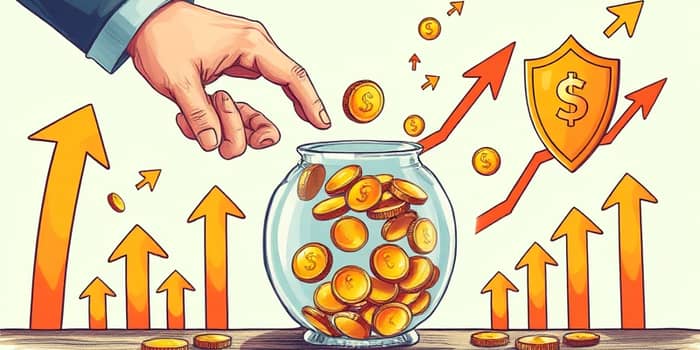
When Emma stashed her life savings in a traditional bank account at 2% interest, she felt a sense of security. Years later, she watched prices climb steadily, realizing her money was buying less than ever. This invisible drain on her purchasing power left her anxious about meeting future goals. If you’ve ever felt that nagging worry, you’re not alone. Understanding inflation is the first step toward safeguarding your financial well-being against its relentless pull.
In this comprehensive guide, we will explore the mechanics of inflation, examine its real-world impact on savings, and outline actionable steps to build a resilient financial plan.
Inflation refers to a sustained increase in the general price level of goods and services over time, measured by indices such as the Consumer Price Index (CPI) or the Personal Consumption Expenditures (PCE) price index. A moderate rate, typically between 2-3% annually, can signal healthy economic growth. However, when inflation accelerates beyond central bank targets, it can trigger uncertainty and erode confidence in the currency.
Conversely, deflation—falling prices across the economy—can stall spending as consumers delay purchases, potentially leading to recessions. While deflation is less common, understanding the full inflation-deflation spectrum helps investors and savers remain vigilant about economic shifts.
The roots of inflation can be traced to three core drivers. Recognizing these factors can help you anticipate market movements and adjust your strategy accordingly.
Global events such as pandemics, geopolitical tensions or supply chain disruptions can amplify these underlying pressures, leading to volatile price environments.
Imagine placing $10,000 in a savings account earning 1% interest while inflation runs at 4%. After one year, your account grows to $10,100, but you need $10,400 to maintain the same purchasing power. This difference illustrates the erosion of purchasing power over time. Over a decade, compounded losses can significantly undermine financial security.
For retirees or those relying on fixed-income streams, inflation can be particularly damaging. Fixed annuities, pensions or social security benefits that are not indexed to inflation gradually lose real value, forcing seniors to cut back on essentials such as healthcare, nutrition and housing.
Even bonds—typically perceived as safe investments—can suffer in rising rate environments, as higher yields make existing bonds less attractive, causing their prices to fall. This dual challenge of diminished returns and reduced purchasing power makes inflation a formidable adversary for savers.
Protecting your savings requires a proactive, diversified approach. No single tactic suffices; instead, combine complementary strategies to create a robust defense.
Beyond these core options, consider alternative assets such as gold or inflation-sensitive commodities, which tend to hold value during periods of currency depreciation. Some investors also explore cryptocurrencies as potential hedges, though such assets carry elevated volatility and regulatory risks.
Long-term success hinges on disciplined planning and regular reviews. Start by determining your target asset allocation based on factors like age, risk tolerance and financial goals. A common rule of thumb is to allocate a portion equal to your age in bonds, with the remainder in growth assets, but adjust this to reflect your unique circumstances.
Establish an emergency fund equivalent to three to six months of living expenses in liquid, low-risk accounts. This buffer can prevent forced selling of investments during market downturns or sudden expenses.
Implement a periodic rebalancing strategy—annually or semi-annually—to realign your portfolio with your original targets. This disciplined approach helps you buy low and sell high, systematically trimming assets that have run up and boosting those that have lagged behind.
Don’t overlook the power of tax-advantaged accounts such as IRAs or 401(k)s, which can shelter gains from annual taxes and further amplify your compounding returns.
Inflation may seem like an abstract economic indicator, but its effects touch every aspect of personal finance. By arming yourself with knowledge—recognizing inflation’s causes, anticipating its impact and deploying a suite of protective strategies—you transform uncertainty into opportunity.
Whether you’re just starting your career or drawing down retirement savings, adopting a long-term financial stability and growth mindset will serve you well. Embrace diversification, prioritize inflation-indexed instruments and maintain a vigilant review schedule to keep your financial plan aligned with evolving economic conditions.
Today’s actions shape tomorrow’s outcomes. Take the first step toward securing your purchasing power and building lasting wealth—your future self will thank you.
References













